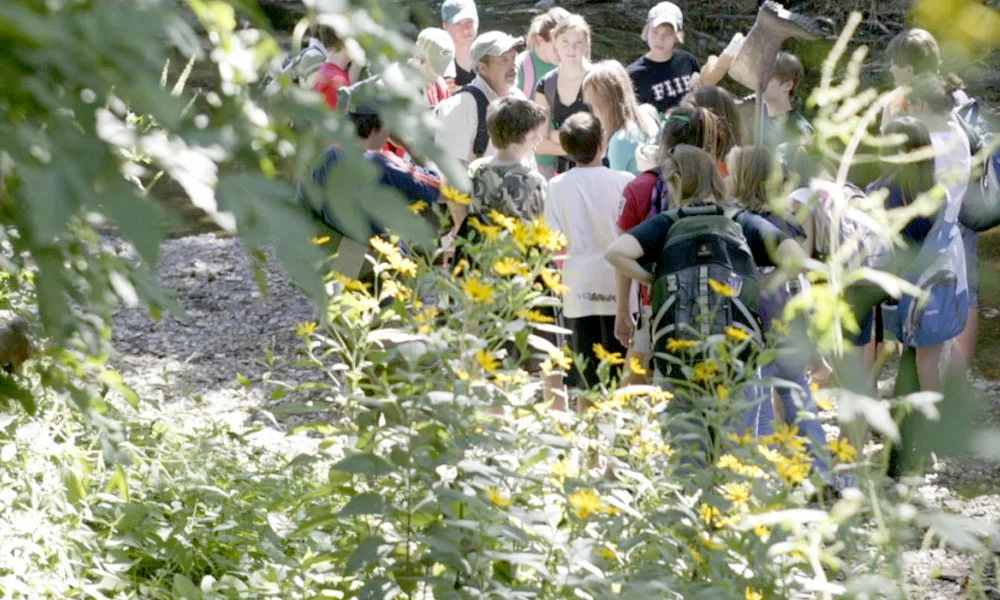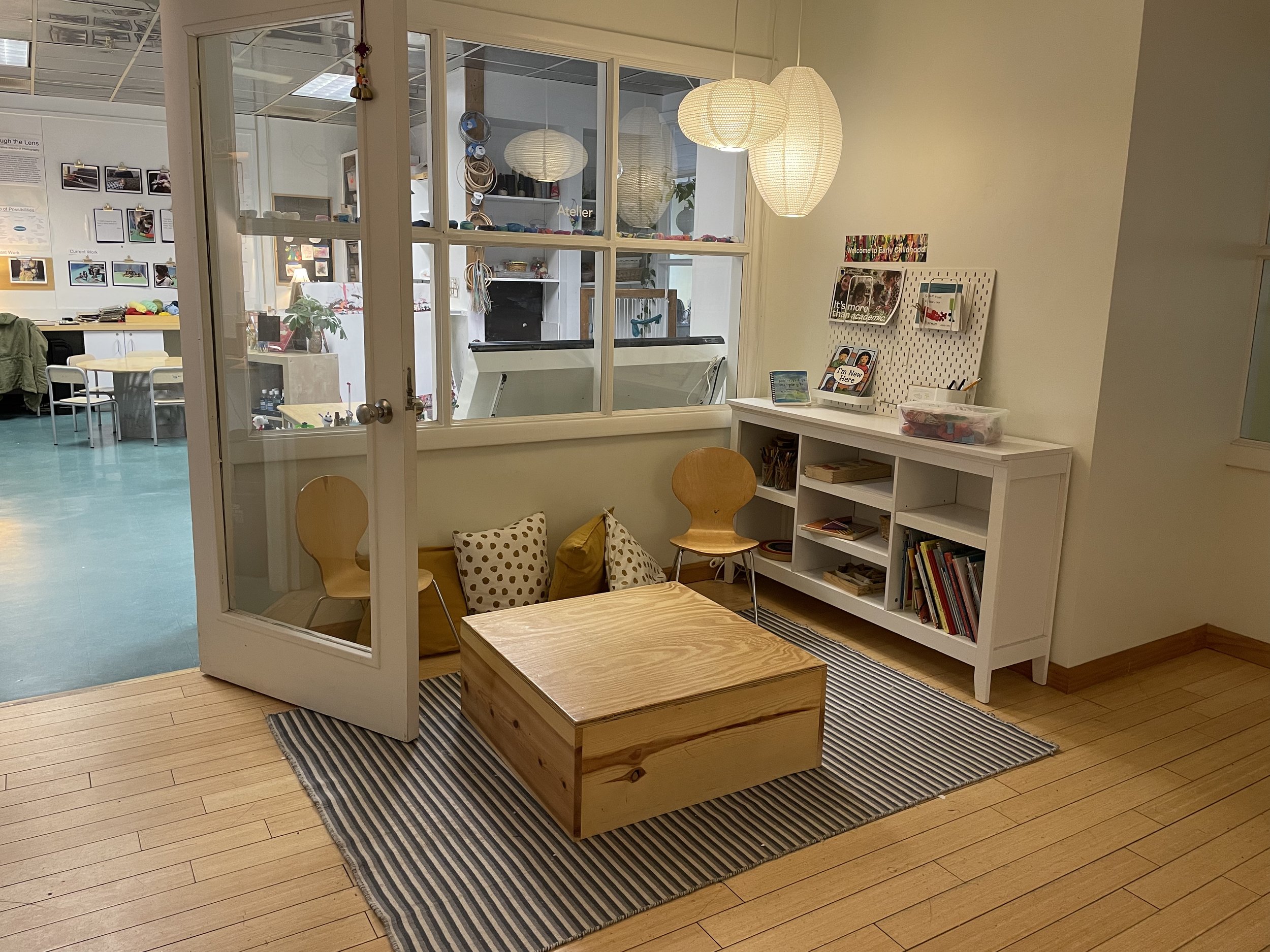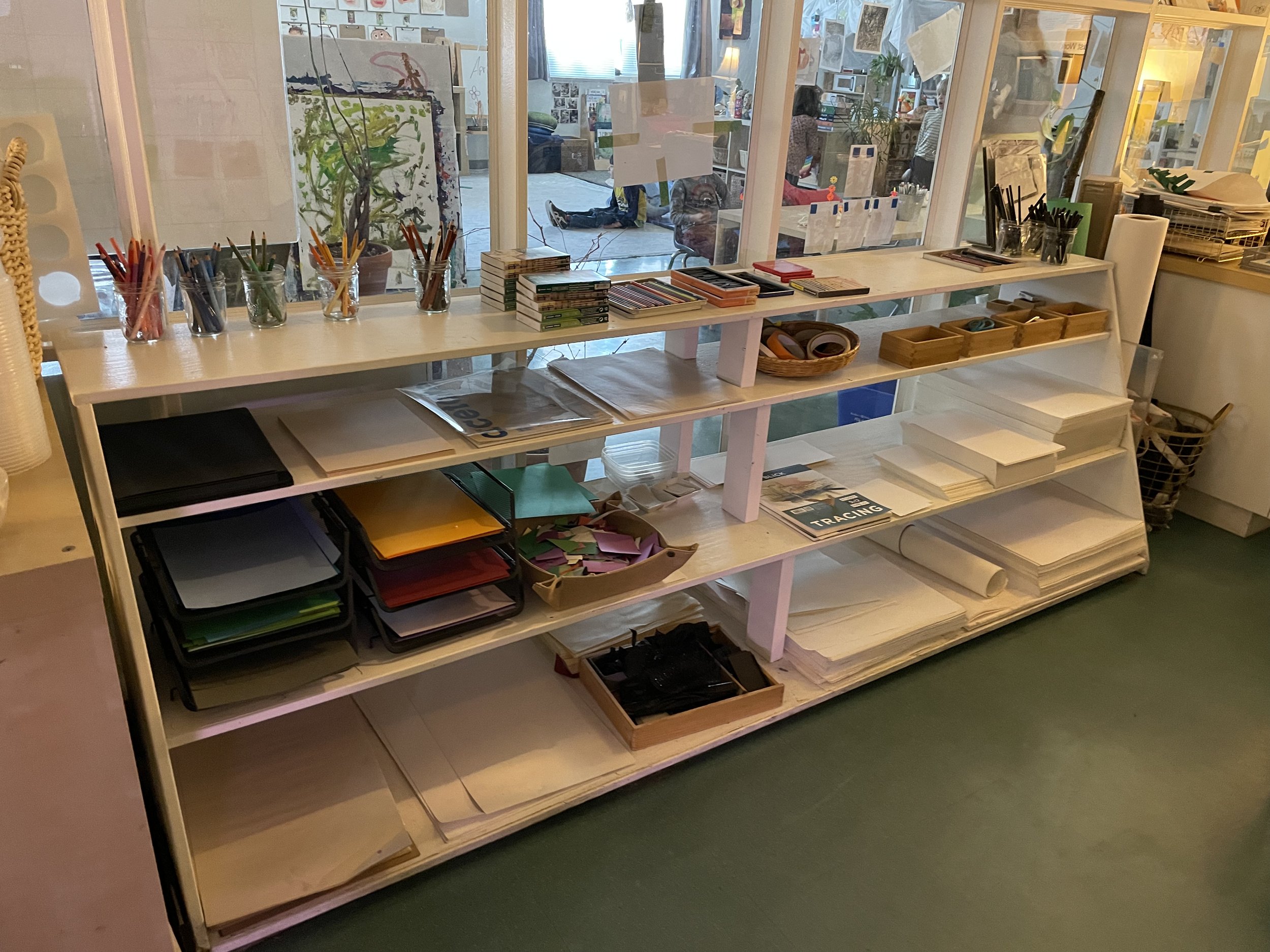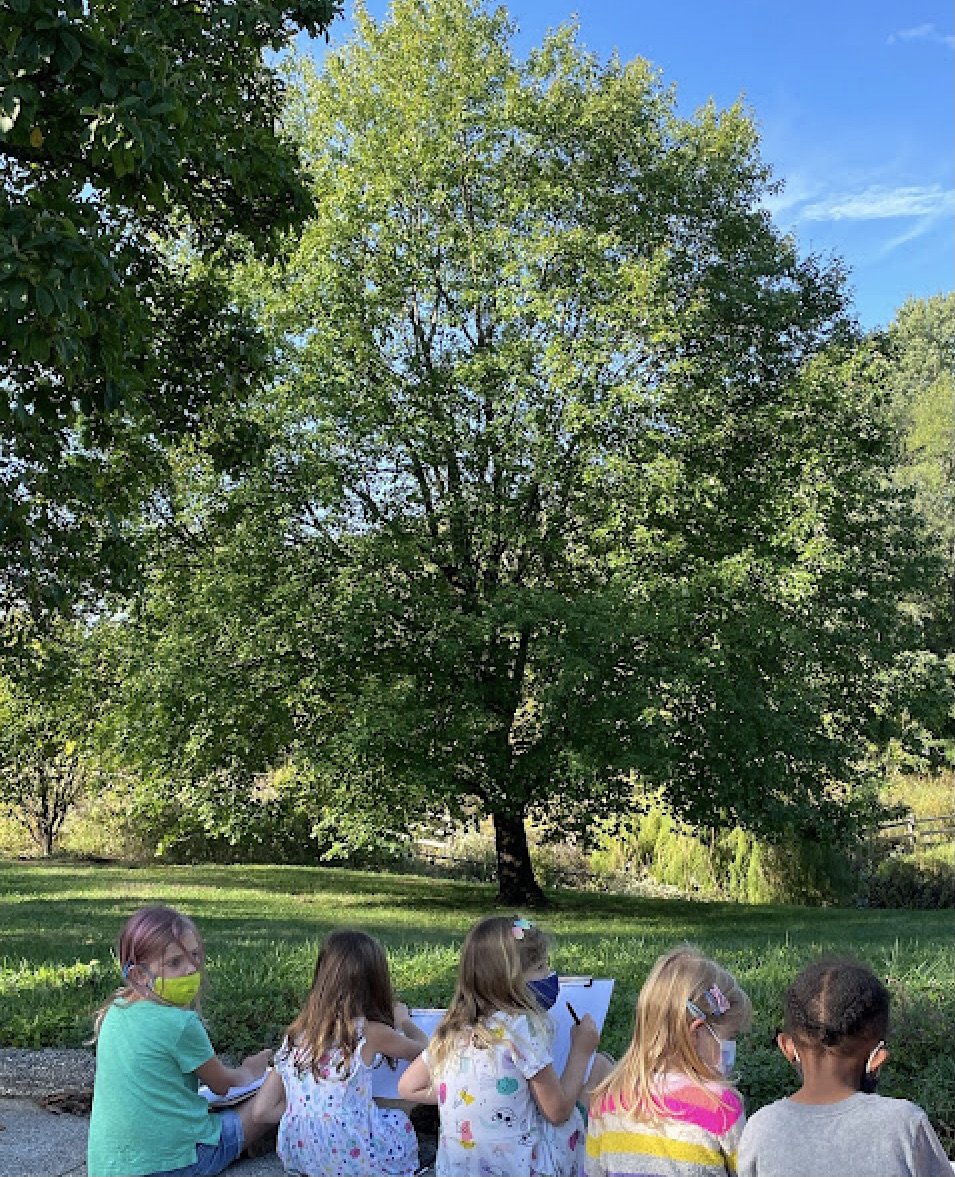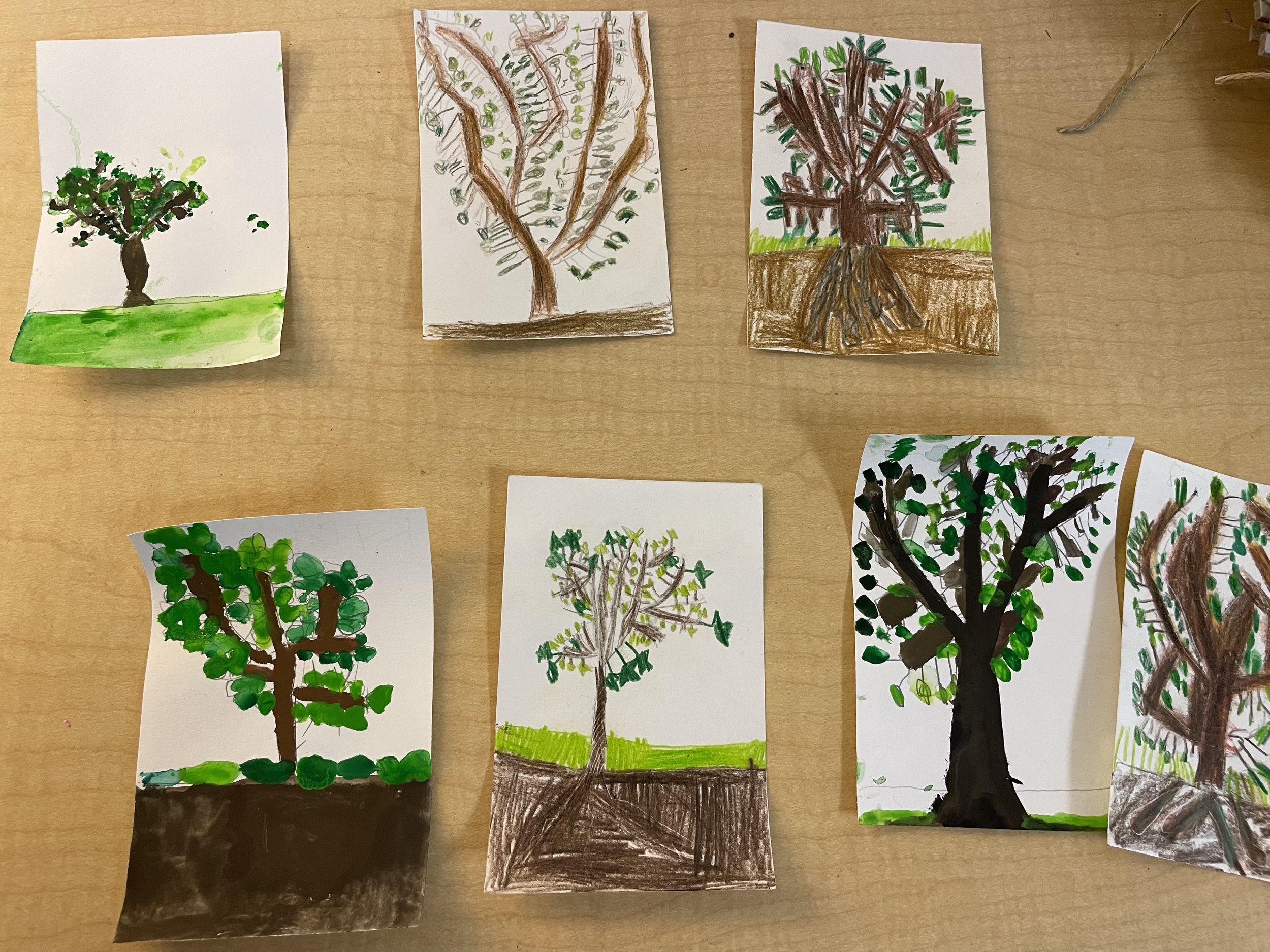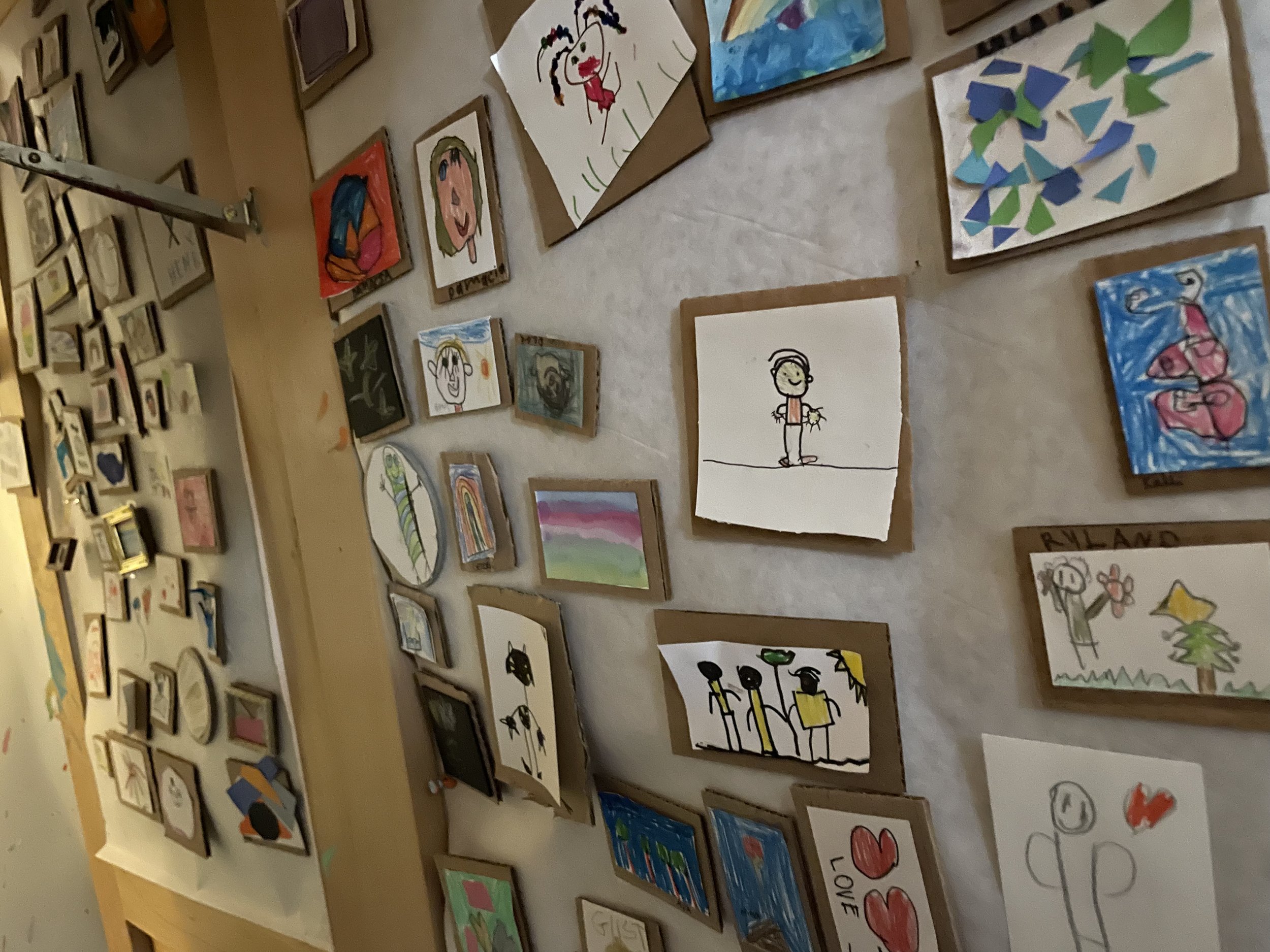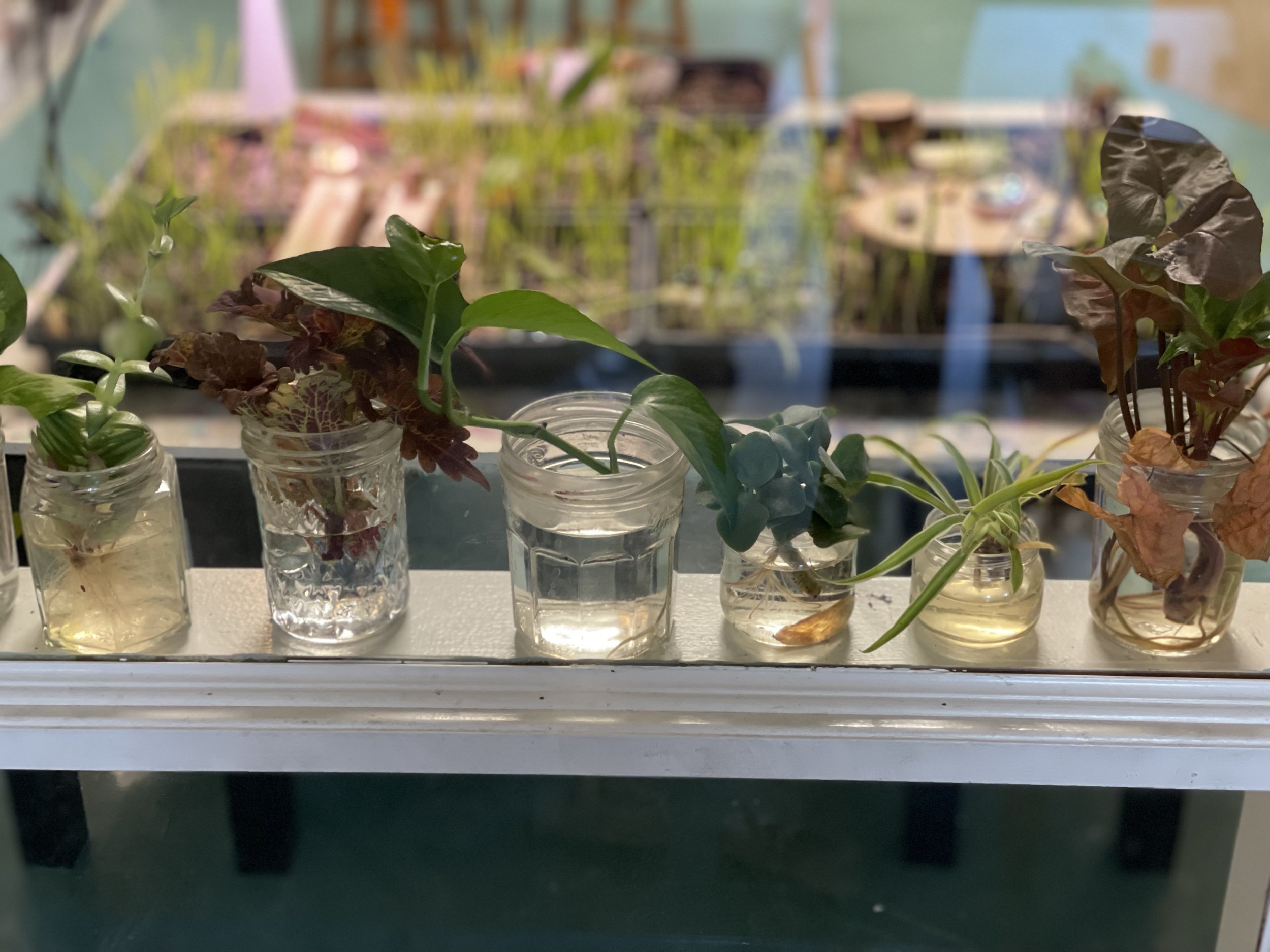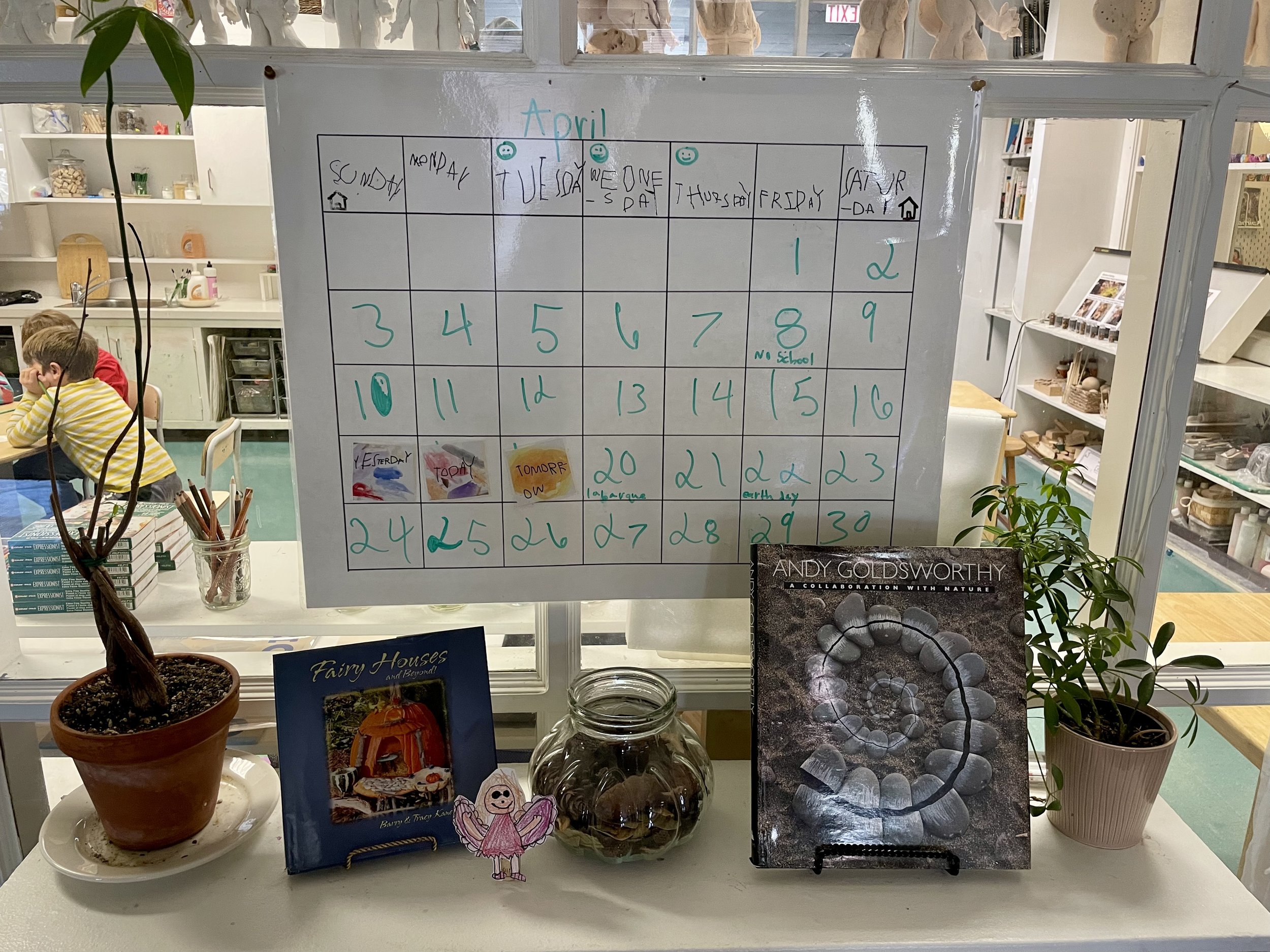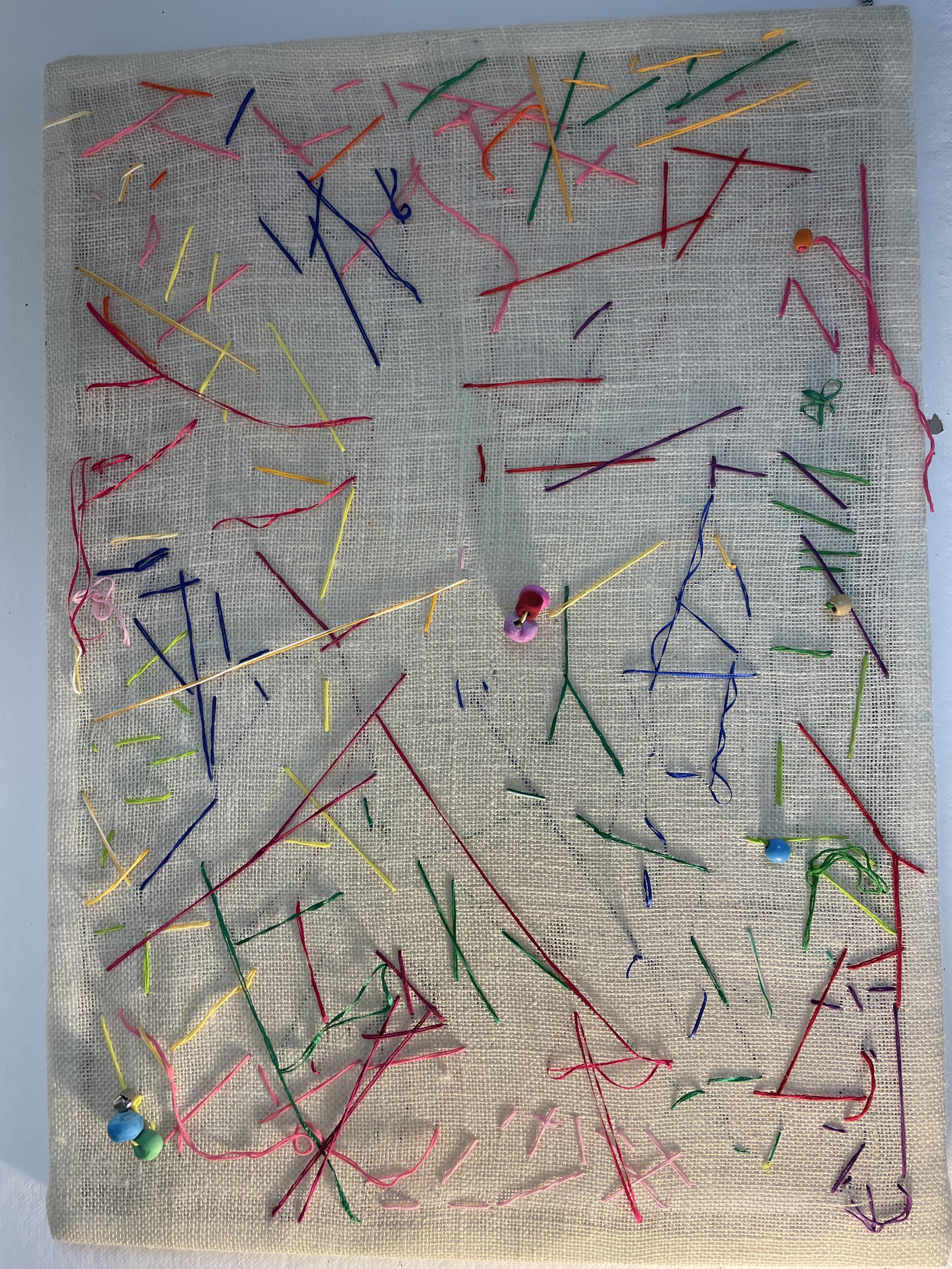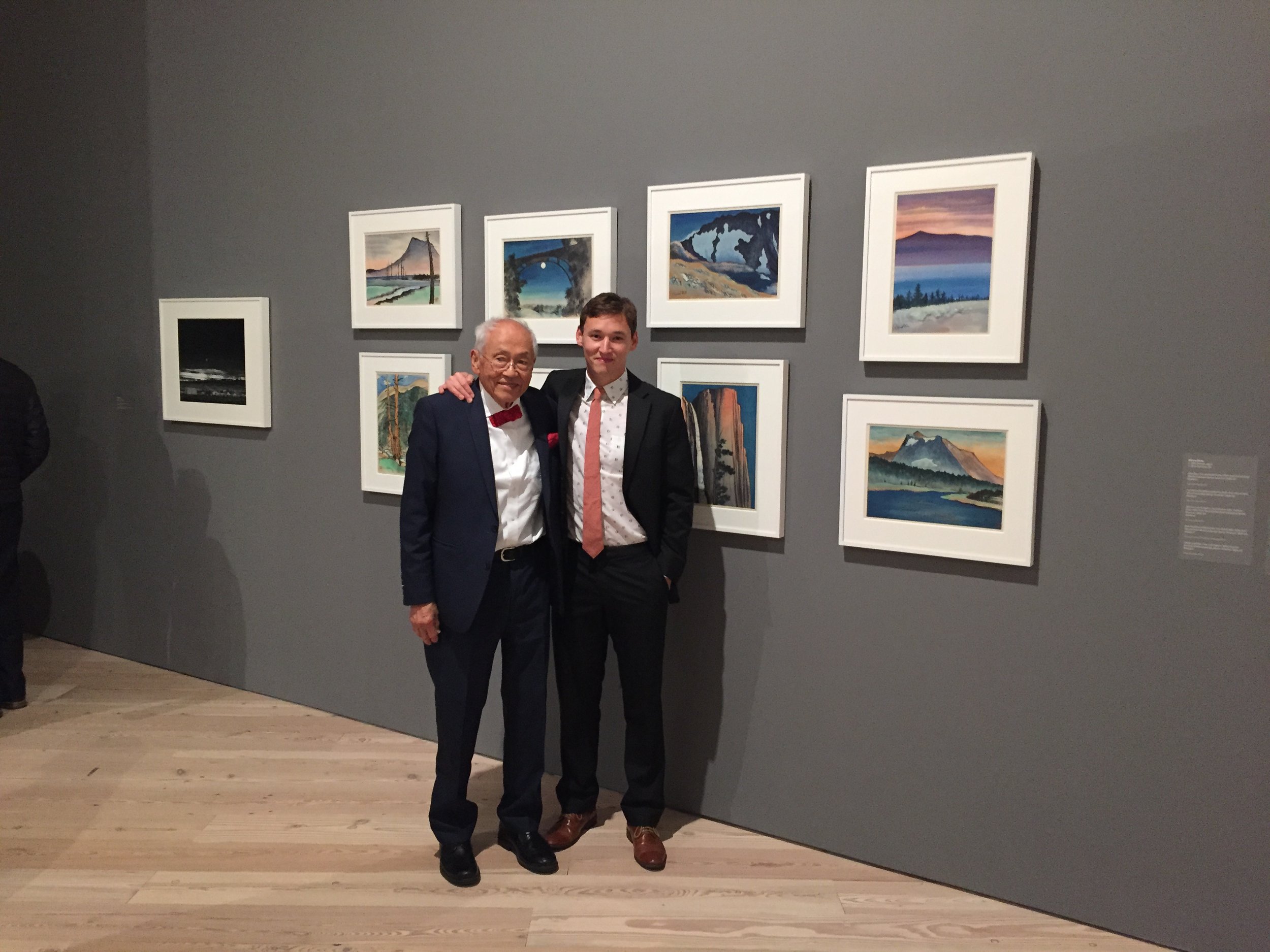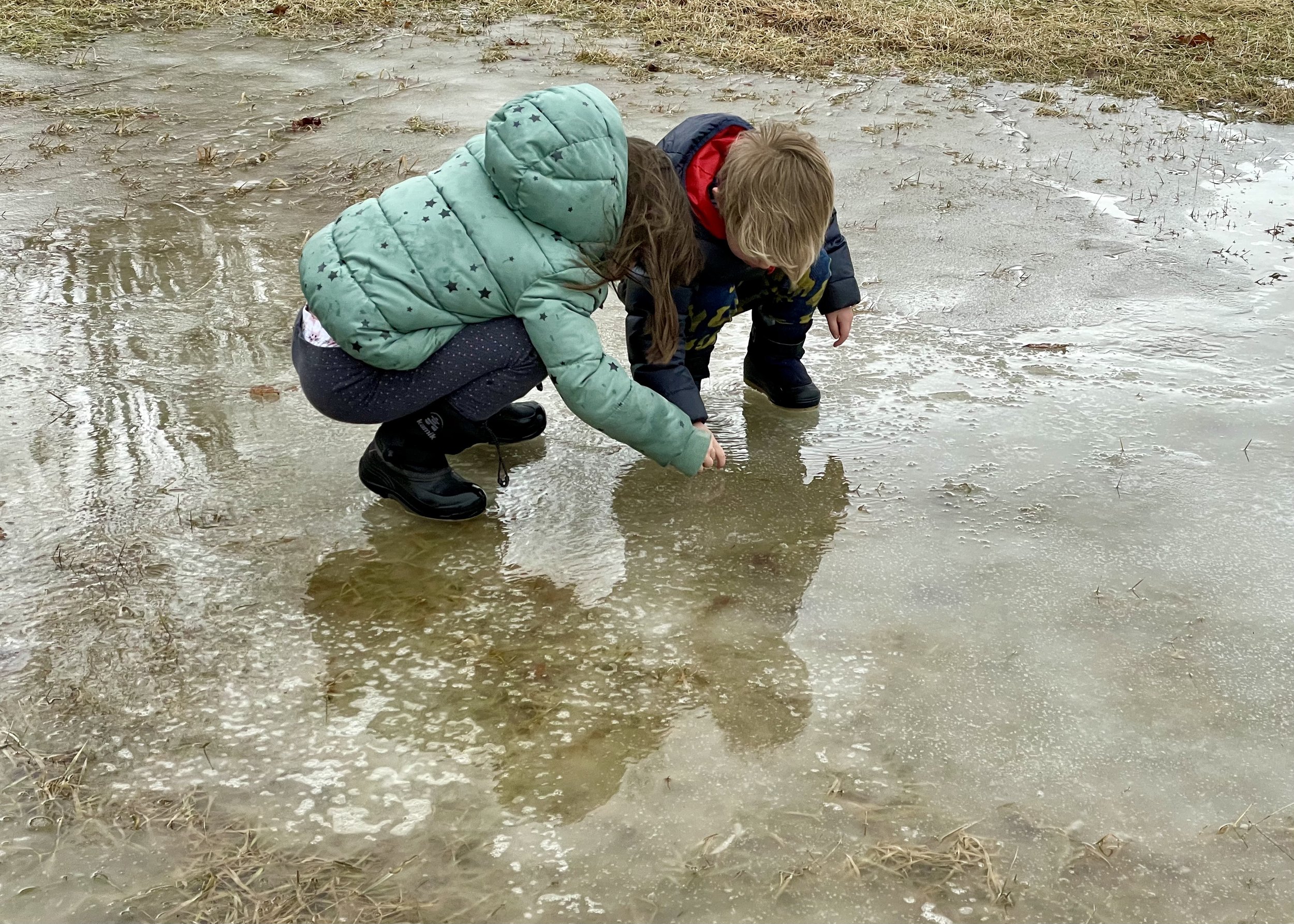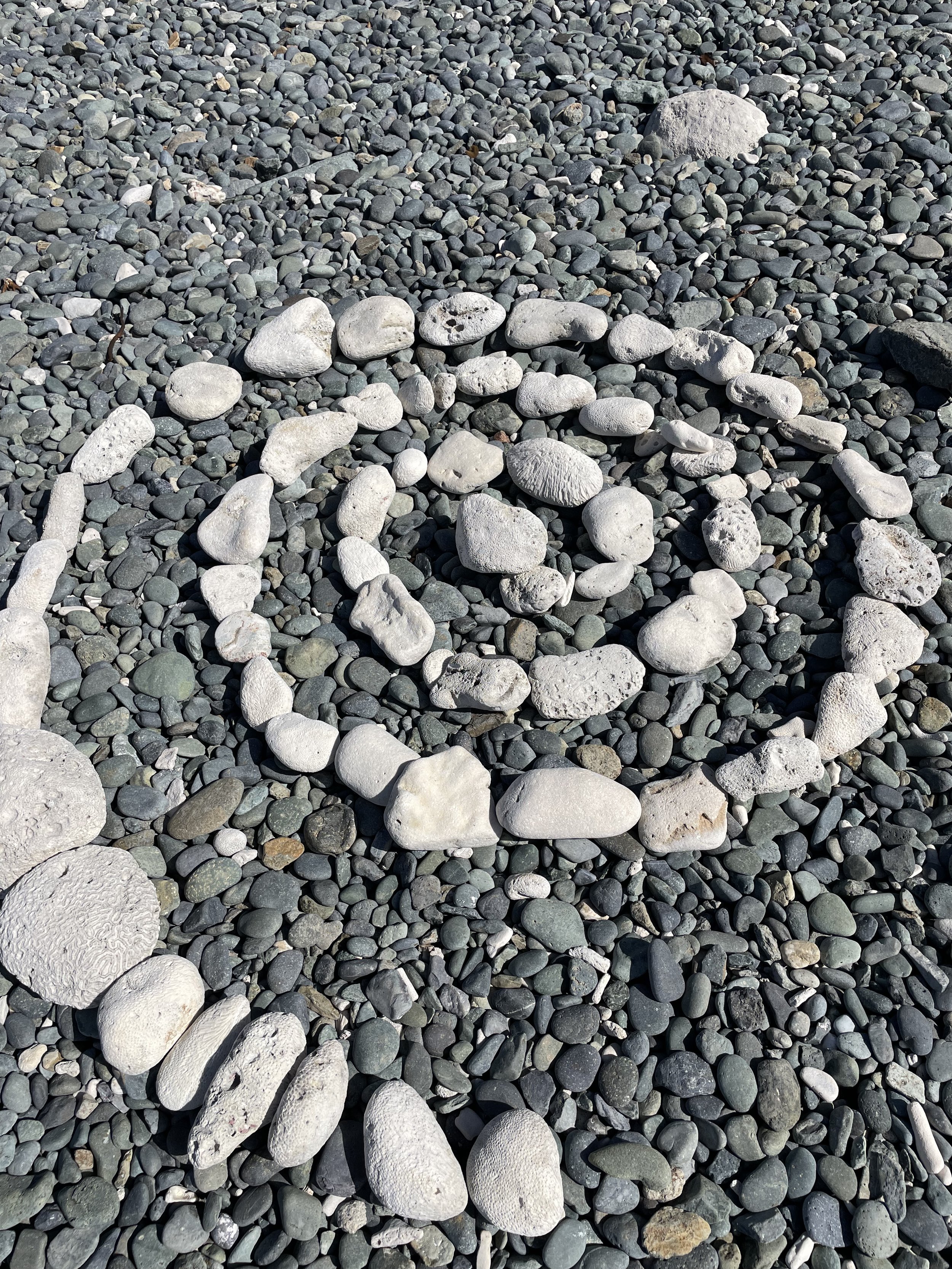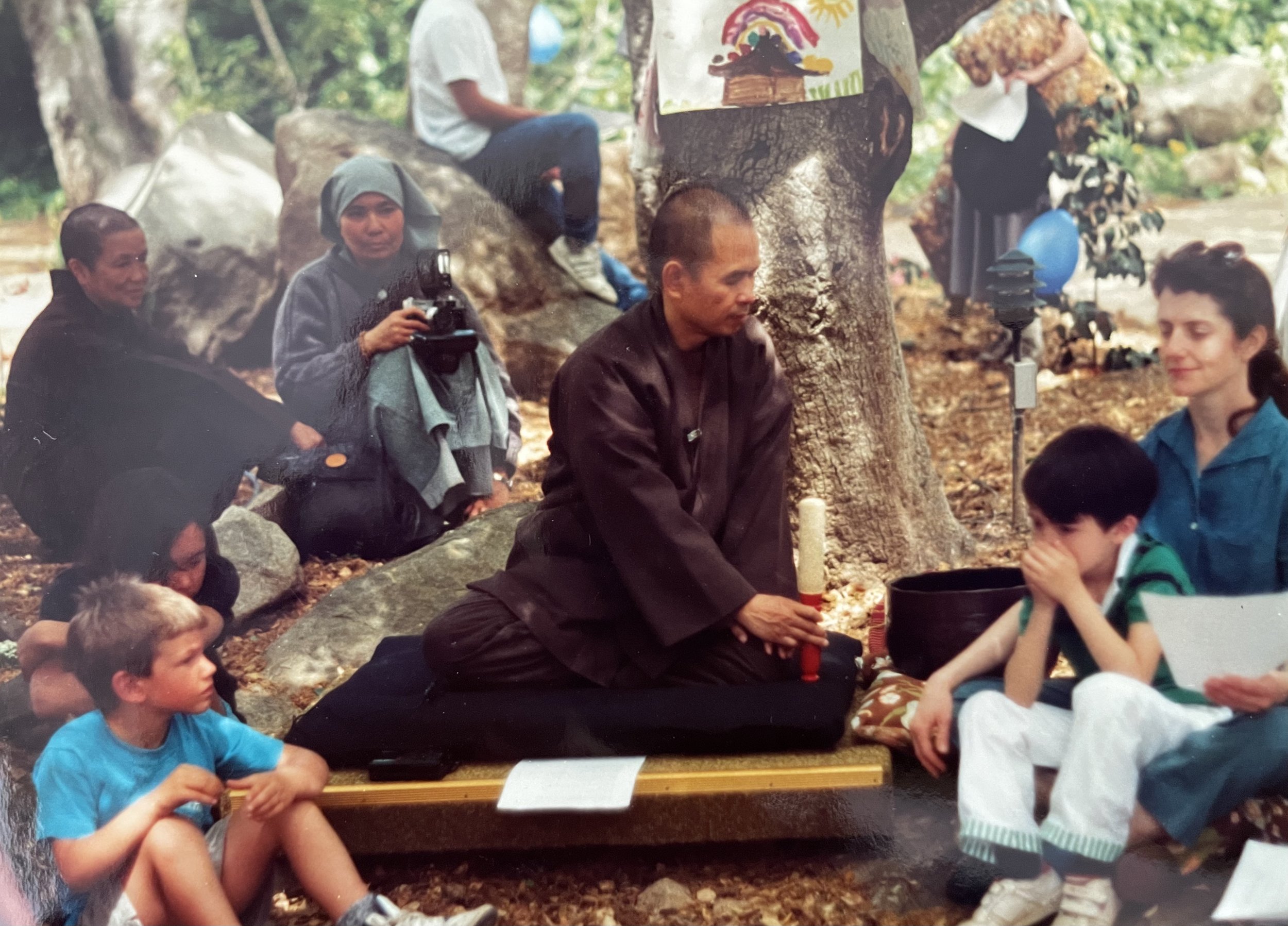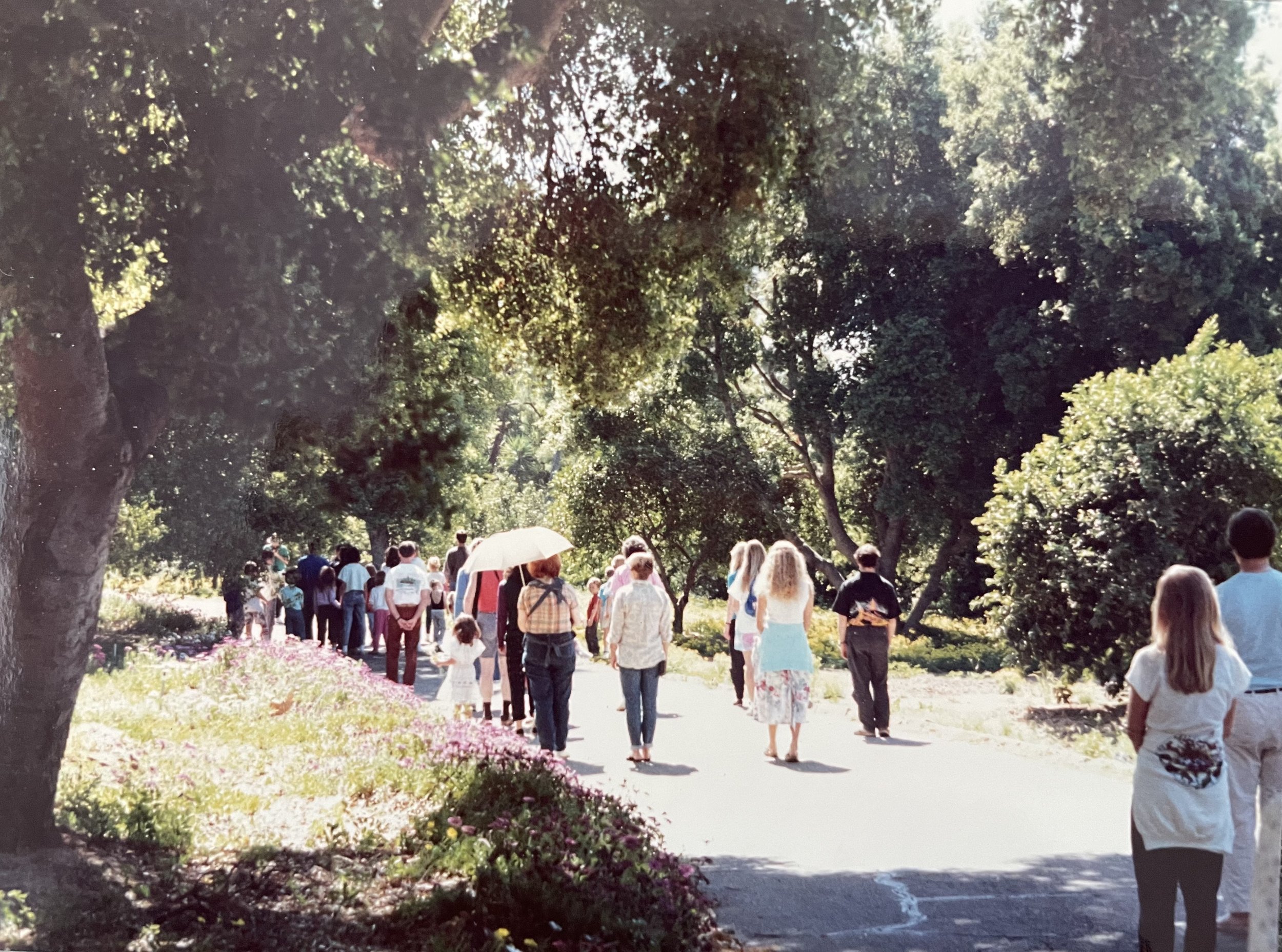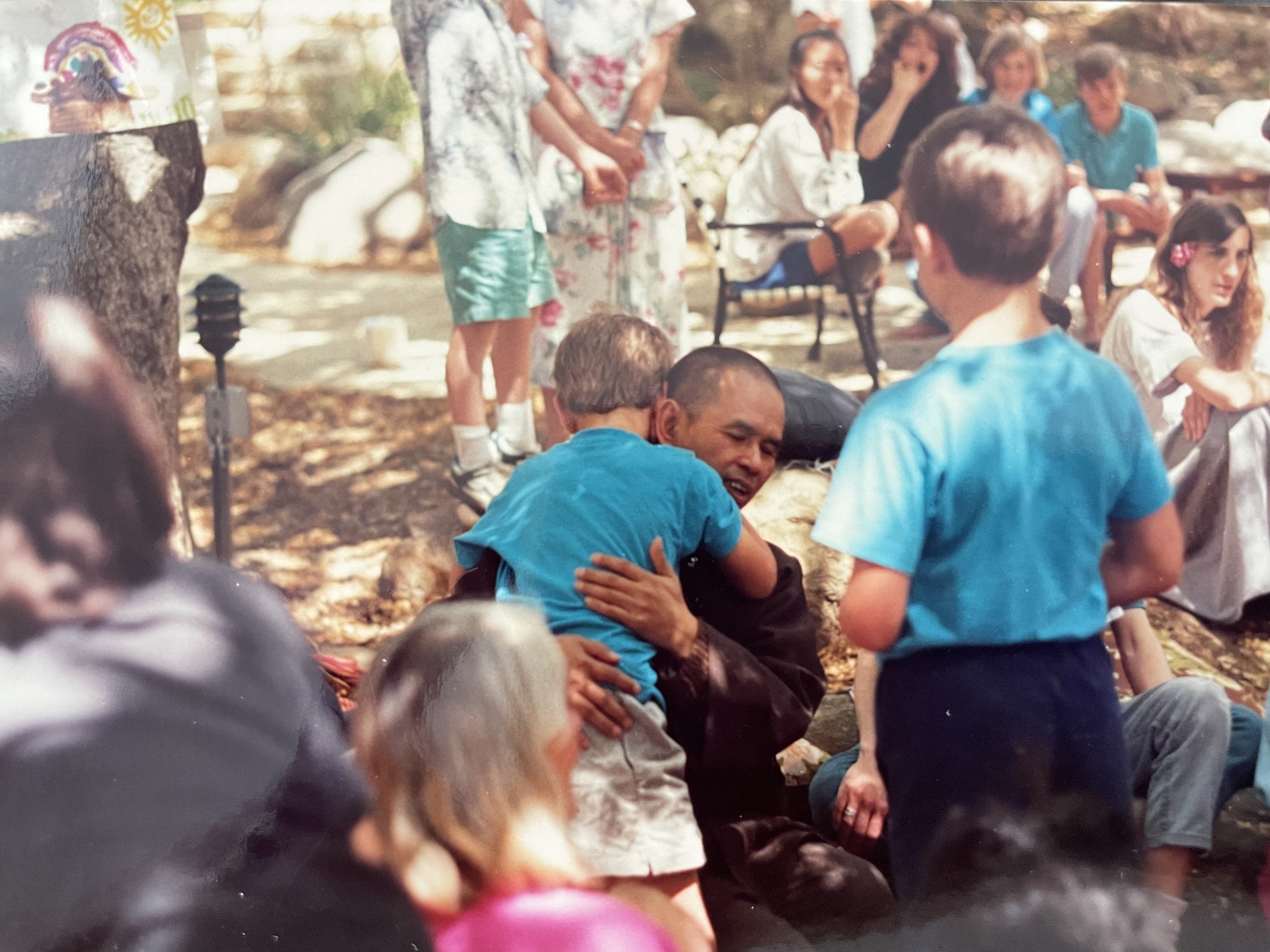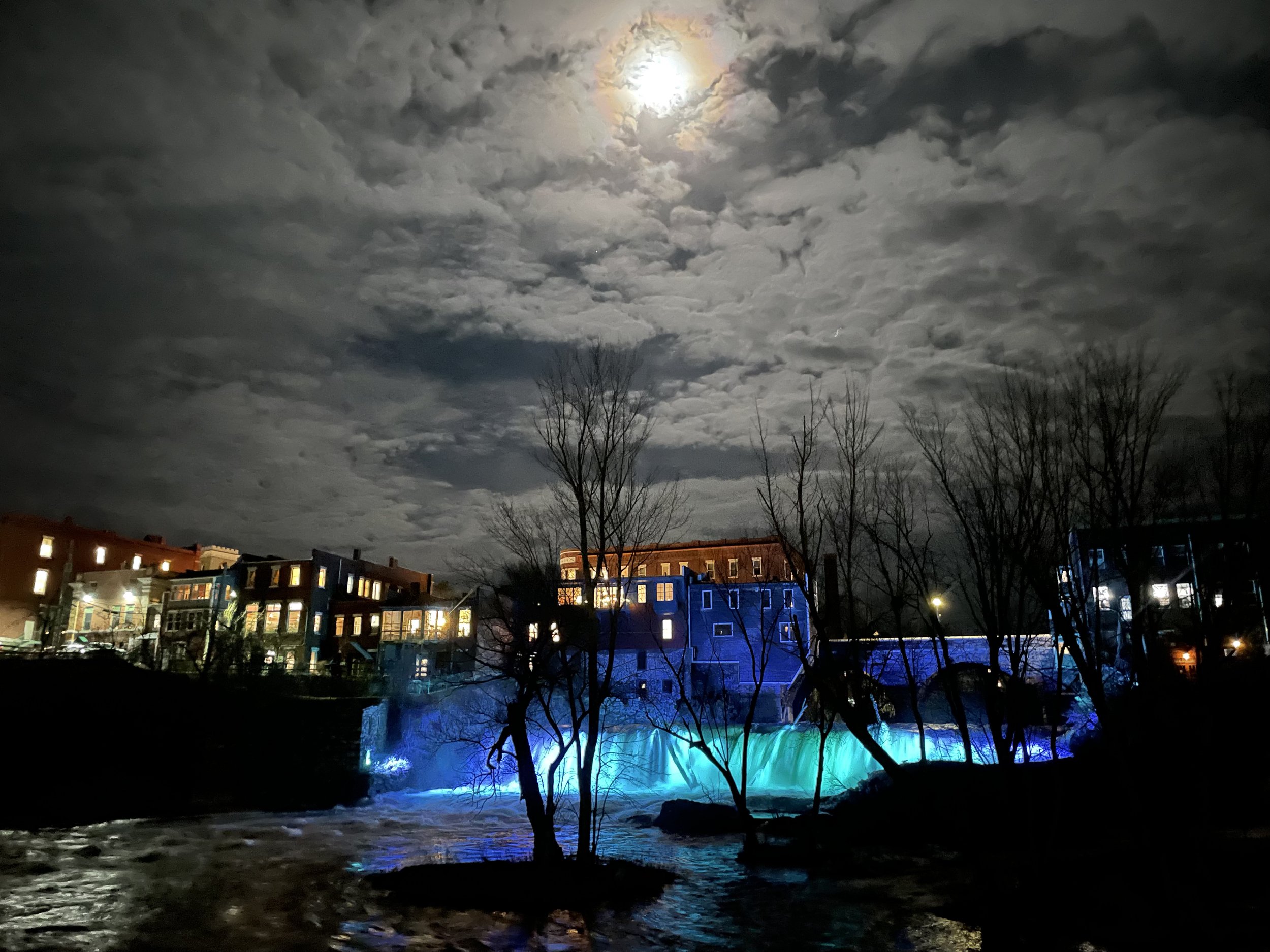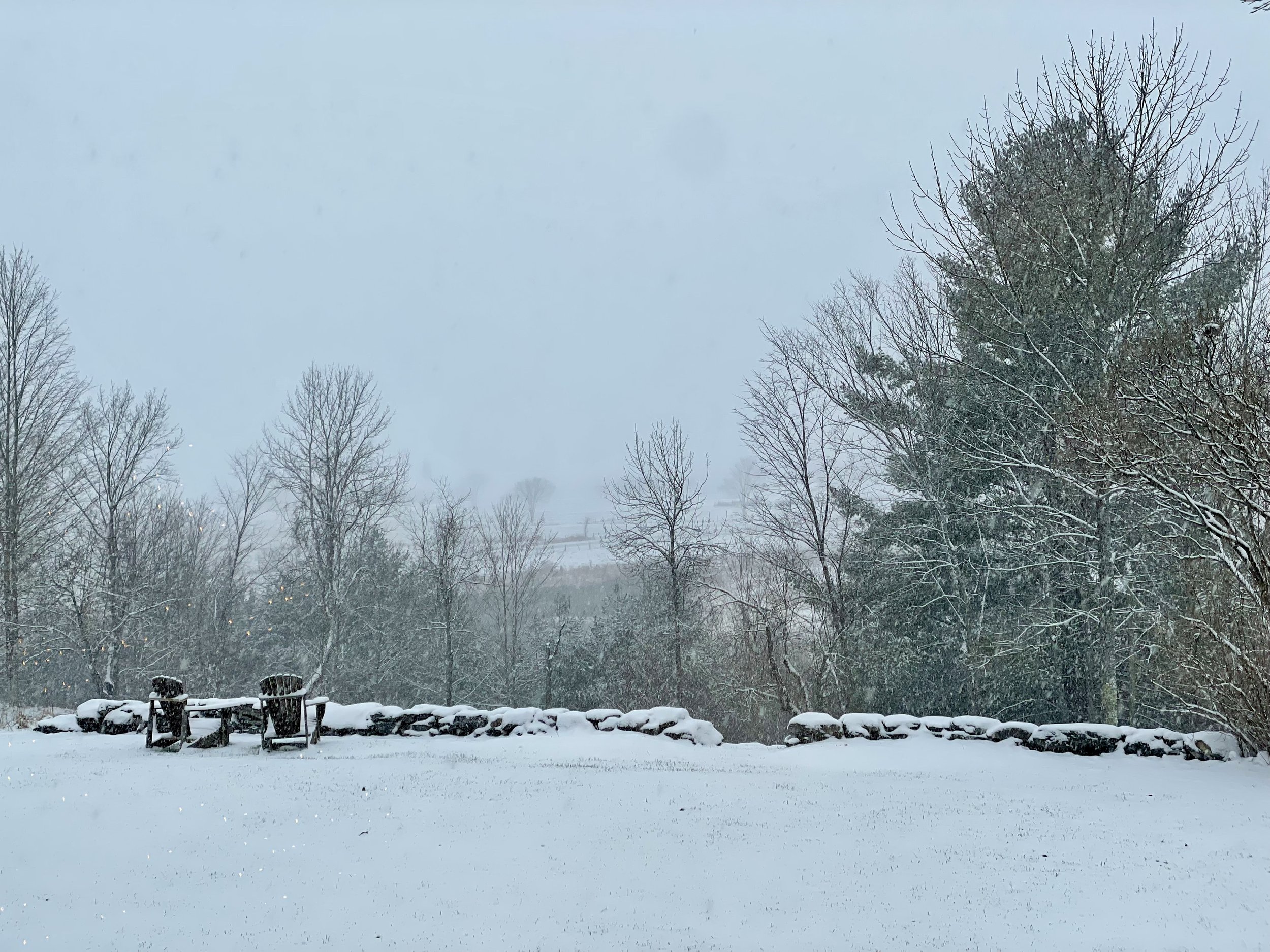In the Big Bend Room, The College School
We just returned to Vermont after a week in St. Louis working in schools and visiting friends and family. It was our first trip back in two and a half years, of course, because of our global pandemic. It is a joyful experience for Ashley and me to be able to be in schools again! We are lucky enough to have been in five schools in the last two weeks. We are eager to feature our work with one of the schools in St. Louis, Principia School, in a blog post soon. This month, we want to revisit The College School, Louise’s “home school.”
Entry to the early childhood wing, The College School
I graduated from my teaching career at The College School 14 years ago, and I moved out of the position of atelierista in 2002. Twenty years ago. For the last fourteen years, Sarah Hassing has served as the atelierista at The College School. I always look forward to going into the atelier to see what is happening and how things have evolved. For the last two years, Sarah has worked toward a Master of Arts in Innovative Early Childhood Education at UC Denver in partnership with Boulder Journey School, as has Uchenna Ogu, another friend and colleague at The College School.
Inside the Atelier, The College School
When I visited last Monday, four kindergarten children were sitting with Sarah around the small round table that is still a center piece, one that we ordered from Italy many years ago. Sarah introduced me to the children who were working on making drawings of “the beautiful tree,” in the nearby park that they had followed and befriended through the seasons with their teachers, Uchenna Ogu and Emily Levin. The children consulted photographs and were all focused on their drawings, which were beautiful and distinctly different. Uchenna told me that the children had named the tree and wanted to visit often. “Our class visited the tree during the different seasons and noticed that while the leaves changed over time, the bark did not. This feature made it into The Beautiful Tree Song that the children wrote and composed for the tree: “I am the tree, The beautiful tree, Swirly bark, in the park, I can just be me”.
Drawings of “The Beautiful Tree”
While four children worked on tree drawings, another child was playing and building with loose parts; working to construct a marble run out of two tables pushed together, plastic tubing, and large blue marbles. Sarah told me that he was an avid engineer.
As the children finished up, Sarah asked Georgia if she would give me a tour of the “Hidden Museum.” An end table was moved out of the way at the end of two easels pushed together to reveal small drawings and paintings on tiny cardboard frames on the inside of the easels. There was a ticket booth and a café made out of tiny loose parts…all hidden from view until opened up. Enchanting…like a secret garden.
When I asked about how this all started this is what Sarah said:
The hidden museum began when I found one of my daughter's old dollhouse toys, a tiny framed portrait of a cat. I was so taken with it, that I felt it needed to come to The College School for some reason... knowing the children love small spaces, I hid it by hanging it up underneath the easels. I also hung a small arrow there that I cut out of paper. It began as an experiment, would they notice this? Would they be drawn into a tiny world? What might happen once they made the discovery? They were as smitten with the tiny artwork as I was, and so they began to add more and more small compositions around it. Their initial work ranged from simple illustrations in pen and ink to watercolors and detailed drawings. Feeling that this first wave of interest was waning, I relaunched the experience with new materials such as collage and sculpture. Our build led to one of the small groups deciding that the museum must have a cafe. One child managed the group, giving some jobs of furniture builders and others that of menu creator. The children continue to add to the museum, and we have recently been working diligently on a special exhibit for the museum, one that will be set-up outdoors for parents to come and view. Uchenna noted that kindergarten children are excited to feature their drawings of the beautiful tree in the special exhibit of the “Hidden Museum”, so that, in their words, ‘others can love the tree’, as they do.
The Hidden Museum, The College School
In one corner of the atelier a large handmade loom stands with a nearby dowl holding many spools of ribbon…a place to weave for several children at a time. There is a grow table with newly sprouted wheat grass and loose wooden parts where children are working on fairy house prototype designs for final versions that will eventually be installed outside. Cuttings of plants in small jars line the ledge of the window wall behind this grow table. On the shelf nearest the door, there is a display of scents, crushed herbs and flowers in tiny jars that the children have mixed to make and name new fragrances.
Fairy house designs in a grow tab
There are so many senses engaged in this room. So many materials organized beautifully and in ways that invite imagination and intellectual challenge as well as choice and focus. So many disciplines and domains are at play…growing plants, mixing dried plants to explore fragrance, physics, literacy, ecological literacy, writing, drawing, sewing, weaving, sculpture…And all of this with a relaxed and easy flow and focused attention and great pleasure in making and inventing, sharing and laughing, connecting and learning.
From this central room with three glass walls, we can see the three-and four-year-old children on one side and the four and five-year-old children on the other, engaged with materials and areas in the rooms that are irresistible to them. This space always evolves. The teachers grow and change. Organization, pleasure, learning, joy, surprise, respect, creativity, beauty…these values and foundational principles are always present as new chapters are written in this space. Next door, and down the hall, you will find similar scenes of engaged children and lively learning in the kindergarten, first, second and third grades.
The Newport Room, The College School
I am always honored to return here. I feel thrilled to know that this is where I started and this is where I grew as a teacher, a thinker, a partner, and a writer. Thank you, Sarah Hassing, Uchenna Ogu, and Penny Allen, Lower School Division Head, and all the teachers of early childhood at The College School, past and present, who continue to do this beautiful, evolving work, year after year. You are an inspiration to so many, and most of all, to the children who live and learn alongside you every day.

